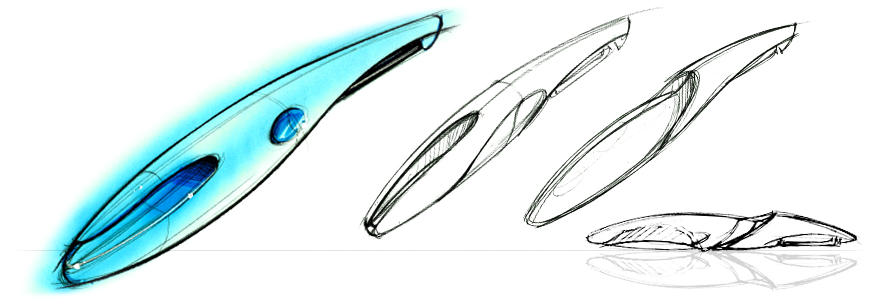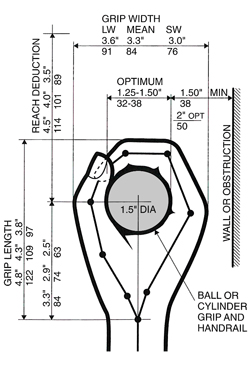Good design should always put the end user first to get the design right and ensure successful adoption from consumers.
|
Handles and hand grips are our most common interface with many products. The science of ergonomics ("fitting work to people") has much to say about handle size, force and the positioning of hands. An "ergonomic" hand grip is one which will comfortably fit the majority of users, and which also intuitively prompts the user to handle the object in a way which is safe and comfortable. A poorly-shaped or positioned handle can introduce a risk of back strain (for example, if it makes a person bend too much, or if it moves the centre of mass too far forward of the lifter), and it can also introduce overuse strain injury possibilities. Many people think incorrectly that only "repetitive" actions cause RSI. However, a single episode using excessive squeezing or twisting force with the hand or forearm, especially where the wrist or hand is in a disadvantaged position, can cause a strain injury. Use your fingertip to feel the tendon stretch on just outside the middle of your elbow when you squeeze your hand: that's where lateral epicondylitis (tennis elbow) occurs. A job with the hands causes a problem in the elbow. Thinking carefully about practical ergonomic implications at the design stage makes it possible to avoid most of these problems. Where a precision finger or hand movement is required, handles and controls should be positioned to keep the relevant fingers (or wrist) at their midpoint, or "neutral" position. If force is needed (for example, to push and rotate a screw driver), the tool (and where possible, the postural approach to the task) should automatically put the upper arm into a configuration in which the maximum twisting force can be exerted at the wrist. This occurs when the elbow is at 90 degrees: try driving a screw in with your arm stretched out straight, and see how much harder it becomes. Finally, there is so much variation in the width and thickness of peoples hands and fingers that it is generally not advisable to try to mould a hand grip to cleverly fit to all of the fingers. There are plenty of people for whom a 'special' shape or size just won't fit, so it is better instead to concentrate on making the all-important hand contact point "just right" for as many users as possible: no sharp edges, properly oriented, not too hot, too hard or too cold. Needing support on your product development journey? Call on 03 9413 9000 or send us an This email address is being protected from spambots. You need JavaScript enabled to view it.
|
Hand grips should comfortably fit majority of users prompting them to hold the object in a way which is safe and comfortable. The Measure of Man and Woman; Human Factors in Design by Henry Dreyfuss Associates (1993 - 2013, Revised Edition) |


